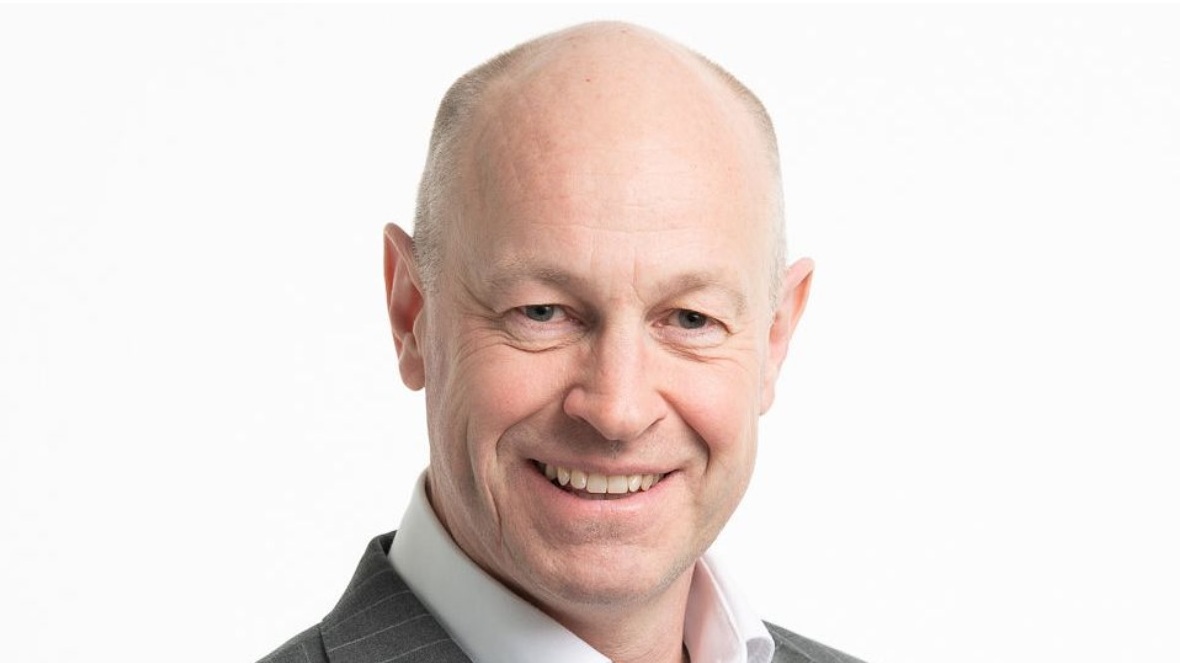
PLSA exclusive: Why BT pension’s investment guardian takes ‘a pragmatic, evolving approach’
As Britain’s pension funds gather at PLSA in Edinburgh, Net Zero Investor sits down with Wyn Francis who represents the UK’s largest company scheme
Just over two years ago, BT's Pension Scheme (BTPS) appointed former PwC risk manager Wyn Francis as its new chief investment officer.
Francis succeeded the well-known industry insider Frank Naylor, who retired after more than 16 years in the role.
Francis had big shoes to fill but 30 months later the seasoned investment manager has become a force to be reckoned with in the UK pension space.
After all, BTPS is the UK’s largest company pension scheme with close to £47 billion of assets, serving around 280,000 members. Each year, it pays out around £2.5 billion in pensions and other benefits to more than 200,000 retired members.
It is a closed, defined benefit scheme that is maturing, meaning all of its members will have retired by 2034.
Since Francis took up the role in January 2021, he pushed through a number of significant changes, the most important one concerning BTPS’ primary service provider, BTPS Management, opening its pension management capabilities to other defined benefit pension schemes in April of this year as it started operating under a new trading name: Brightwell.
Since last month, Brightwell has started providing funding and fiduciary services to the EE Pension Scheme.
This week, as Britain’s pension community gathers in Edinburgh for the investment conference of Pensions and Lifetime Savings Association (PLSA), Francis found time to catch up with Net Zero Investor.
A range of investment opportunities - and risks - are being discussed here this week in Scotland but, obviously, this publication’s main concern is all things net zero and the investments that come with those challenges and opportunities. How do you see the role of asset owners in driving that agenda?
Asset owners have a significant role in shaping the net zero agenda, but there are many parties who all need to work together for collective progress, from companies to investors and governments. This is not something we can all do in isolation. In a similar way, this isn’t just UK-specific, but a global collective effort to achieve success.
So, how do you go about that?
We believe strongly in collaboration. We have active conversations with policy makers on the policy required to help protect the value of assets over the long-term. The transition to a lower carbon future requires that investment and asset owners can contribute to this. Lastly, we collaborate through groups like the Net Zero Asset Owners Alliance and IIGCC which help promote the agenda on a global scale and amplify the message through collective scale.
With global events obviously playing a role?
Yes, the invasion of Ukraine has highlighted the need for an orderly transition to deal with climate change, as we have seen with a brief snapshot of what a tightening of oil and gas has done to the global energy system, translating into substantial geopolitical risk.
Sustainability is a long-term driver of investment risks and returns.
BTPS’s Net Zero 2035 goal helps ensure the Scheme is better prepared to address climate change. The dual focus of reducing emissions and investing in transition opportunities is already highlighting new investment themes such as technological change. We prioritise engagement with high emitting sectors such as utilities rather than divestment at this stage in the transition to drive real world change.
You mentioned the scheme is working to be better prepared to address climate change. How do you decarbonise and 'clean up' your investment portfolio? What do you look out for?
Our focus is on achieving long-term sustainable investment returns for our clients as our belief is that sustainability is a long-term driver of investment risks and returns. We prioritise engagement over divestment. For instance, we could easily ‘green’ our investment portfolio by excluding the highest carbon emitting sectors, but this would only seek to move the problem rather than bring about real change. By setting clear investor expectations and requesting transparency from managers and companies, we are able to encourage science-based targets, promoting human rights whilst improving the robustness and transparency of supply chains.
If the highest carbon emitters are not excluded, and divestment is an exception, transparency and pressure seem crucial for success, or you may fall in the trap of greenwashing and greenhushing. They are increasingly issues many corporates are guilty of and investors are faced with. How do you build in checks and balances?
We are very aware of the problems with both greenwashing and greenhushing. However, due to our long-standing relationships with asset managers and EOS, and the long-term nature of our investments, we seek to reduce the risk of these. We monitor various ESG metrics over time but are mindful that these cannot be looked at in isolation. For instance, we are seeing large swings in carbon emissions year on year. This is due to the data quality and availability but also transitions in company practices.
And if you apply this specifically to your investment portfolio.
We are developing a deeper understanding of the companies in which we invest and are aware of the plans they are undertaking to become more sustainable. A company’s sustainability journey is complex and not linear. This is why engagement and milestones along the way are so important, to be able to monitor their progress towards our best practice sustainability expectations. We are mindful, as investors, that our interactions and expectations drive behaviour. So, in our requests, we want to understand both successes but also blockages and difficulties towards achieving sustainability goals.
A company’s sustainability journey is complex and not linear.
We feel that this more balanced approach helps us better understand and provide a space in which investment managers and companies feel able to share their challenges without always fearing repercussions and helps avoid negative unintended consequences.
So a balanced approach is how Brightwell defines its level of engagement and stewardship approach? In other words, how do you find the right balance?
Stewardship has always been central to our investment approach, long before it became the hot topic it is today. I’ve seen it evolve and develop into an integral part of the investment process as managers strengthen their capabilities and expand their teams, as we too have done. We seek to act as a responsible and engaged owner of the companies and assets in which we invest on behalf of our clients.
Also read
Railpen’s stewardship head: ‘Be careful engaging with companies where there is value at risk’
For example, working with the BT Pension Scheme (BTPS), the UK’s largest corporate pension scheme, we seek to help it meet its responsibilities regarding both the retirement incomes of its members as well as respecting the environment and wider society. This is clearly demonstrated by BTPS achieving UK Stewardship Code reporting status for the second year running which we achieved on its behalf.
Let’s explore that a bit further and take a deep dive, to what extent do you engage with the companies you invest in? How do you apply pressure?
Corporate engagement is typically done on behalf of clients through asset managers and also EOS at Federated Hermes, that BTPS founded in 2004, which has now grown into one of the world’s largest stewardship and engagement services. EOS’s stewardship expertise and resources provide us with wide coverage of different assets and access to specialised expertise across different engagement themes, including biodiversity. EOS has strong and long-term relationships with company boards through multi-year engagements, cultural understanding, relevant language skills and broader connections, which all contribute to, and aid, our stewardship efforts.
Having said that, no single pension scheme or investment manager is sufficiently large or influential enough to drive change on the scale that is required. We value collaboration, working closely with other schemes, engagement service providers, asset managers and organisations such as the Net Zero Asset Owners Alliance (NZAOA) and the Institutional Investors Group on Climate Change (IIGCC). We all benefit from a well-functioning market.
No single pension scheme or investment manager is sufficiently large or influential enough to drive change on the scale that is required.
Fair enough, so how do you drive through change?
To achieve change, asset managers and EOS undertake a series of escalating engagement actions. Depending on the nature of the challenge, it can include meeting the chair or other board members, discussions with other shareholders of the company, submitting resolutions and speaking at Annual General Meetings. They also collaborate with other investors where they are concerned about company practices and performance. We have regular meetings to discuss progress. Of course, there is always the lever of divestment if adequate progress is not being made in appropriate time frames, but that is a last resort action that takes place if other escalation efforts have been unsuccessful.
It all starts with a proxy vote.
Yes, but voting is just one tool in an investor’s box to use to escalate their thoughts to a company and drive change, and it is only applicable to assets where voting is possible, such as equities. We believe making full use of voting rights is part of a pension scheme’s fiduciary duty and requires engagement with service providers and asset managers where applicable to execute all votes in directly held public securities. We believe proxy voting should not be conducted in isolation but as part of a wider engagement strategy.
Please elaborate on that, can you give us an example.
For example, in relation to BTPS, given the Scheme’s Net Zero 2035 goal, companies’ transition plans, climate target setting and polices are an area of engagement focus. There were several controversial votes on climate this proxy season where ambition appeared to have been scaled down. We engaged with managers around the rationale for their votes prior to execution to understand how they were aligning with BTPS’ best interest. We did this even in instances where BTPS was not an equity holder so were unable to vote but held corporate bonds of the specific company or the outcome of the vote would impact the broader transition to a lower carbon economy, and therefore could indirectly affect the Scheme’s assets.
We all benefit from a well-functioning market, so it is important to engage both on specific votes but also on broader implications to an engagement strategy.
So how do you shape this strategy?
Our stewardship activities are focused on the areas that present both the greatest risks and opportunities in delivering long-term sustainable returns for our clients. Climate change is of course a big, but not our sole, focus. We are mindful of the interconnected nature of E, S and G factors whilst also acknowledging that not everything can be tackled in one go. It’s a tricky balance and so we like to take a pragmatic approach that evolves over time.
For example, themes such as human and labour rights, human capital, and board effectiveness and ethical culture all feed into our engagement. Tracking progress relative to objectives is a really important aspect of our stewardship approach, to ensure milestones are being met and real progress is being made, both for the investee entities and investment managers.
Also read
PLSA exclusive: USS heavyweight on decarbonisation, renewables and biodiversity investments


